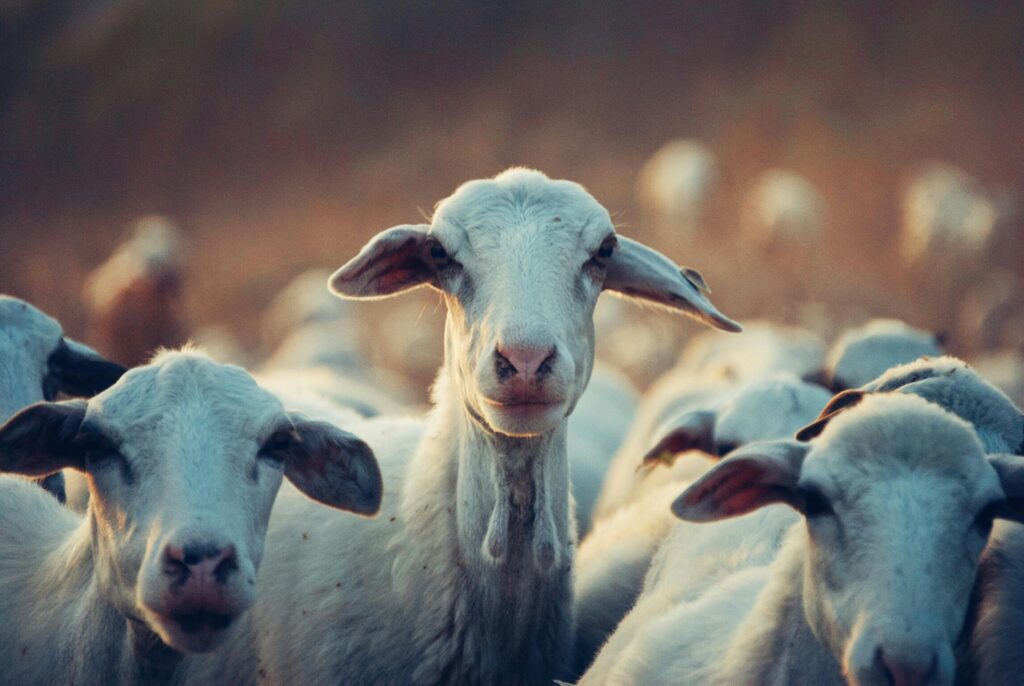Table of Contents
Dog Breeding for Beginners: Introduction
Embarking on the journey of dog breeding can be immensely rewarding, offering a unique blend of challenges and joys. For those new to this field, dog breeding for beginners is more than just a topic of interest; it’s the first step towards a responsible and fulfilling endeavor. It’s about nurturing life, understanding the marvels of genetics, and contributing to the health and vitality of man’s best friend. This guide is designed to navigate you through the complexities of dog breeding, ensuring you’re well-equipped to start on the right paw. Whether you dream of enhancing breed standards or bringing healthy, happy puppies into the world, the path starts here, with a commitment to learning and responsible practices.

Understanding the Basics of Dog Breeding
When diving into dog breeding for beginners, it’s crucial to grasp the fundamentals that pave the way for a successful breeding practice. First and foremost, breeding dogs is a significant commitment, not just in terms of time and financial resources, but also emotional investment. It’s about more than bringing adorable puppies into the world; it involves meticulous planning, understanding canine health and genetics, and a deep commitment to the welfare of the animals in your care.
The Commitment Required
Breeding dogs demands a substantial investment of time. From selecting the right breed to managing health screenings and caring for the pregnant dam, every step requires attention to detail. Moreover, once puppies are born, they need constant care and supervision, especially in their first few weeks of life. The financial aspect is equally important, covering health tests, veterinary care, quality nutrition, and potentially, expenses related to the birth process.
Essential Knowledge on Genetics and Health
A foundational understanding of canine genetics is imperative for any aspiring breeder. This knowledge helps in making informed decisions about pairing to avoid hereditary conditions and promote healthy, vigorous puppies. Additionally, a commitment to health screening is non-negotiable. Screening for genetic diseases, ensuring vaccinations are up to date, and regular health checks are part of responsible dog breeding practices.
Choosing the Right Breed
For beginners in dog breeding, selecting the breed to work with is one of the first decisions you’ll face—and it’s not one to take lightly. This choice will significantly impact your breeding journey, from the care requirements of the breed to understanding specific health concerns. Let’s look at some key factors to consider and highlight a few breeds known for being more accessible for first-time breeders.
Factors to Consider
- Temperament: Look for breeds whose temperament matches your lifestyle and breeding goals. Consider whether you want a more active breed that requires lots of exercise or a more laid-back companion.
- Size: The size of the breed can influence your decision, especially based on your living situation and the space available for breeding and raising puppies.
- Health: Some breeds are prone to specific genetic conditions, requiring more extensive health screening and veterinary care.
- Popularity: While popular breeds can offer more opportunities for placing puppies in homes, they also come with more competition and higher expectations for quality and health.
Popular Breeds for Beginners
- Labrador Retriever: Known for their friendly nature, intelligence, and versatility, Labradors are a favorite among first-time breeders. They are generally healthy, with a well-documented lineage, making health screenings more straightforward.

- Golden Retriever: Similar to Labradors, Golden Retrievers are beloved for their friendly demeanor and trainability. They require regular health checks, especially for hips and eyes, but their popularity makes finding homes for puppies relatively easier.

- Boxer: While Boxers are energetic and require a bit more effort in training and exercise, they are known for their loyalty and protective nature. Health screenings for heart conditions and hip dysplasia are important for this breed.

- Cavalier King Charles Spaniel: These small dogs are ideal for breeders with limited space. They are friendly, adaptable, and relatively healthy, although it’s crucial to screen for heart issues and syringomyelia, a condition affecting the spinal cord.

Health Screening and Genetics
Embarking on a breeding journey requires a strong commitment to the health and well-being of the dogs involved. Health screening and a basic understanding of genetics are paramount to achieving this goal. Here’s why they are so important and how you can navigate these complex topics.
Importance of Health Screening
Health screening is the process of testing and checking dogs for specific diseases and conditions that can be inherited by their offspring. It’s a critical step in preventing the spread of genetic diseases and ensuring that puppies are healthy and have the best start in life. Common tests include hip dysplasia evaluations, eye exams, and specific genetic tests that vary by breed.
For beginners in dog breeding, it’s vital to work closely with a veterinarian to understand which health screenings are necessary for your breed. This proactive approach not only contributes to the overall health of the breed but also increases the value and desirability of your puppies.
Understanding Basic Genetics
Genetics play a significant role in dog breeding, influencing everything from the puppies’ appearance to their temperament and health. A basic understanding of how traits are inherited can help breeders make informed decisions about which dogs to pair together.
The key is to aim for genetic diversity to reduce the risk of inherited diseases while striving to enhance positive traits and characteristics of the breed. This involves studying pedigrees and genetic testing results to make breeding decisions that promote the health and well-being of future generations.
Preparing for Your First Litter
Preparing for your first litter involves several key steps, from deciding when to breed to providing care throughout the pregnancy and being ready for the whelping (birthing) process. Let’s delve into what you need to know to navigate this journey successfully.
Essential Preparations
Before breeding, ensure your dam is in optimal health; this includes being up-to-date on vaccinations, undergoing necessary health screenings, and being at an ideal age for breeding. Consult with your veterinarian to determine the best time for breeding based on the dam’s health, breed, and age. Nutrition also plays a crucial role during pregnancy, so it’s important to adjust the dam’s diet according to veterinary recommendations to support her health and the development of the puppies.
Understanding the breeding process and timing is critical. Knowing when your dam is in estrus (heat) and recognizing the optimal time for mating can significantly impact the success of conception. For beginners, partnering with an experienced breeder or seeking guidance from a reproductive veterinarian can provide valuable insights.
What to Expect During the Birth Process
The gestation period for dogs is approximately 63 days from conception, but this can vary. As the due date approaches, prepare a whelping box in a quiet, comfortable area of your home where the dam can give birth and care for her puppies. Familiarize yourself with the signs of labor, which include restlessness, nesting behavior, and a drop in body temperature.
During the whelping process, it’s essential to monitor the dam and puppies closely. While many dogs can give birth without intervention, be prepared to assist if necessary and have your veterinarian’s contact information readily available in case of emergencies.
After the puppies are born, ensure they are nursing properly and that the dam is comfortable and well-cared for. The first few weeks are critical for the puppies’ development, requiring vigilant care and attention from the breeder.

Puppy Care and Socialization
The early weeks of a puppy’s life are foundational for its development. Proper care, nutrition, and early socialization play pivotal roles in shaping healthy, well-adjusted dogs. Here’s what beginners need to know to set their puppies up for success.
Initial Care for the Puppies
In the first few weeks, puppies depend entirely on their mother for nutrition and warmth. During this time, it’s essential to monitor their weight gain and overall health closely. Ensure they are nursing adequately and that the dam is comfortable and producing enough milk. A clean, safe, and warm environment in the whelping box is crucial to prevent health issues.
Puppies open their eyes around two weeks of age, and by the third week, they’ll begin to explore their surroundings. This period is an excellent time to start gentle handling by humans to get them used to human touch.
Importance of Socialization
Socialization is the process of exposing puppies to various people, animals, environments, and experiences during the critical socialization window, which typically closes around 12 to 14 weeks of age. Proper socialization can significantly impact a dog’s behavior and temperament, making them more adaptable and less likely to develop fear-based behavior problems in the future.
Begin introducing puppies to a variety of stimuli in a controlled, positive manner. This can include different types of people, gentle handling, exposure to household sounds, and, eventually, safe interactions with other vaccinated dogs. Remember, positive experiences are crucial; overwhelming a puppy can be counterproductive.
Vaccinations play a vital role during this period. Follow a veterinarian-recommended vaccination schedule to protect the puppies from infectious diseases before they start exploring the outside world.
Finding Homes for the Puppies
Finding the right homes for your puppies involves more than just a transaction; it’s about matching puppies with families that are best suited to their breed, temperament, and specific needs. Here’s how to approach this responsibly and effectively.
Responsible Practices in Finding Homes
Begin the process of finding homes for the puppies well before they are ready to leave. This includes advertising in a way that reaches potential owners who are knowledgeable about the breed and prepared for the commitment of dog ownership. Utilize your website, social media platforms, and breed-specific forums to share information about the litter, the breed’s characteristics, and the requirements for potential owners.
Screening potential owners is a vital step in this process. Prepare a questionnaire or conduct interviews to assess their suitability, including their lifestyle, experience with dogs, and understanding of the breed’s needs. It’s also helpful to discuss expectations regarding the puppy’s care, training, and any breed-specific considerations.
Offering guidance and support to new owners can ease the transition for the puppies and their new families. Providing a puppy pack that includes care instructions, food, and a familiar item from the litter’s environment can help. Be prepared to offer advice and answer questions even after the puppies have gone to their new homes.
Screening Potential Owners
The screening process is your opportunity to ensure that your puppies are going to safe, loving, and prepared homes. Key considerations include:
- The family’s lifestyle and living situation: Do they have enough space and time to dedicate to a puppy?
- Experience with dogs: Have they owned a dog before, and are they familiar with the breed’s specific needs?
- Plans for training and socialization: Are they committed to properly training and socializing the puppy?
It’s also beneficial to establish a return policy, making it clear that you are willing to take a puppy back if circumstances change. This commitment underscores the responsibility breeders have toward their puppies, regardless of age.
Raising Goats for Beginners: The Complete Guide to a Profitable Goat Farm

Dog Breeding for Beginners: Conclusion
Dog breeding for beginners is a path filled with challenges, learning opportunities, and the joy of contributing to the health and happiness of dogs. It’s a journey that demands responsibility, compassion, and an unwavering commitment to ethical breeding practices. From selecting the right breed to ensuring each puppy finds a suitable home, every step should be taken with the utmost care and consideration for the well-being of the dogs involved.
Remember, breeding is not just about producing puppies; it’s about enhancing the breed, ensuring the health and vitality of each generation, and bringing joy to families. Continue to educate yourself, seek advice from experienced breeders, and stay involved with breeding communities to grow and improve in your breeding endeavors.
As you embark on or continue your journey in dog breeding, keep the welfare of the dogs as your guiding principle. The rewards of seeing healthy, happy puppies grow and find their forever homes are immeasurable. Welcome to the rewarding world of dog breeding!
FAQs
What qualifications do I need to start breeding dogs?
Starting as a dog breeder doesn’t require formal qualifications, but a thorough understanding of canine genetics, breed standards, and reproductive health is essential. Gaining experience through mentorship with established breeders, attending breeding-related seminars, and joining breed clubs and associations can provide valuable knowledge and resources.
How can I ensure my breeding practices are ethical?
Ethical breeding practices prioritize the health, welfare, and genetic diversity of the breed. This includes conducting health screenings, choosing breeding pairs responsibly, providing excellent care for the dam and puppies, and thoroughly screening potential owners to ensure puppies go to loving, suitable homes.
What is the best age to start breeding a dog?
The best age to start breeding a dog varies by breed, size, and health status. Generally, females should have their first litter after reaching physical maturity but before they are considered too old, which could increase health risks. Consulting with a veterinarian to determine the optimal breeding age for your specific breed is crucial.
How many litters can a female dog safely have?
The number of litters a female dog can safely have depends on her health, breed, and how well she recovers from each pregnancy. As a general rule, breeding a female dog in every estrus cycle is not recommended. A responsible approach considers the well-being of the dam, limiting the number of litters to prevent health complications.
How do I find the right veterinary support for breeding?
Look for a veterinarian with experience in reproductive health and breeding. They can provide invaluable support throughout the breeding process, from pre-breeding health screenings to assistance during whelping. Establishing a good relationship with a trusted vet ensures you have the support needed for healthy breeding practices.


